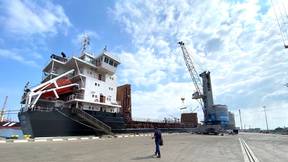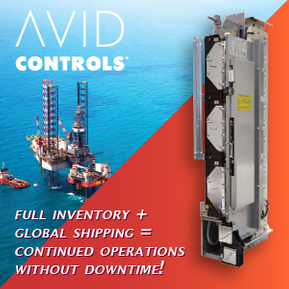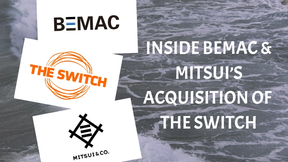Shell Marine LubeMonitor Updated to Capitalize on Digital Trends
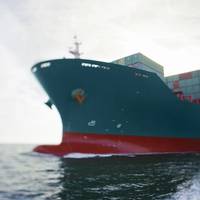
Shell Marine has deployed a suite of enhancements to its LubeMonitor service, surfacing a wider range of technical and operational insights.While the features become more sophisticated, Shell Marine has taken strides to ensure that its LubeMonitor user interface and reports are now simpler to use and generate. New features include:Enhanced fleet and vessel insights that go beyond traditional reporting: allowing users to compare vessels from fleet level all the way down to its…
Mobilgard for Plug-In Hybrid Vessel
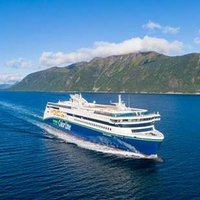
ExxonMobil is supplying Mobilgard ADL 40 engine oil for Color Hybrid, Color Line’s latest addition to its fleet of ferries. The vessel is the world’s largest plug-in battery hybrid ship and was recently named ‘ship of the year 2019’ by Nor-Shipping.The vessel, which is already in service between Sandefjord, Norway, and Strömstad, Sweden, is capable of carrying 2,000 passengers and 500 cars. It combines four conventional Rolls-Royce Bergen B33:45L in-line diesel engines with electric…
Shell Marine Brings ICON Line 58% Cost Savings
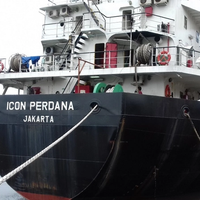
Shell Marine has provided clear evidence of the cost savings available when a customer chooses its medium-speed engine oil Shell Gadinia, after PT Indo Container Line (ICON Line) confirmed that reduced lubricant consumption led to longer oil-drain intervals and costs down by 58%.Calculations made immediately after comparative trials for the Indonesian shipping line showed that a 58% cut in lubricant costs is available to ICON Line through the use of Shell Gadinia S3. Annualized…
Alfa Laval Debuts FlowSync
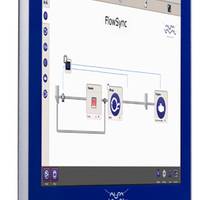
Flow optimization of the separator feed increases protection from cat fines while decreasing energy use. The new Alfa Laval FlowSync is a single solution for automatic flow control, unique in its ability to steer multiple separator feeds simultaneously. Alfa Laval FlowSync is an automatic control system that synchronizes the oil feed to Alfa Laval separators with the engine load. By matching the flow of fuel to the engine’s needs, it increases retention time in the separator bowl, giving the separators the best possible conditions for doing their job.
Beware the Dangers of Cat Fines

Horror stories frequently circle the maritime industry portraying tales of onboard damages induced by catalytic fines, or cat fines, used in oil processing. All cat fines that remain in fuel oil after centrifugal separation have the potential to cause abrasive wear and damage to the engine. Studies of high cylinder and piston ring wear cases show that cat fines particles embedded in the liner surface cause nearly 90 percent of the wear, leading some engine manufacturers to limit the maximum allowance of cat fines entering the engine during the combustion process to 10-15 ppm and below.
ExxonMobil Helps Extend Ship’s Piston Ring Life
Athens-based Costamare Shipping has more than tripled the piston ring replacement period to more than 55,000 hours for containership Cosco Yantian, helping the company reduce costs and improve vessel performance. According to ExxonMobil, the life extension was achieved by switching the container vessel to its Mobilgard 570 cylinder oil in combination with the MobilGard Cylinder Condition Monitoring (CCM) program. The expected piston overhaul interval for the Cosco Yantian’s MAN Diesel & Turbo 12K98MC MK7 engine was 16,000 hours of unmonitored operation. Following a consultation with ExxonMobil’s Field Engineers, it was suggested that the vessel operator introduce Mobilgard 570 and the MobilGard CCM program.
Marine Lubricants: New Year, New Emission Rules

January 1, 2015 is an important date for ship owner and operators to ensure that their vessels, when operating inside ECA zones, are doing so in compliance with strict new emission edicts concerning the emission of sulfur. – to discuss some of the technical and logistical matters you must consider. The move to low sulfur fuels is well recorded, but from your point of view, describe the situation that ship owners face regarding fuel selection and cylinder lubrication come January 1, 2015?
Oils and Oil Analysis: What You Need to Know
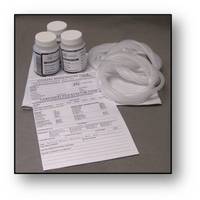
In any given lubricant (such as engine oil, transmission fluid or gear oil), there are three main factors that influence the “useful life” of the lubricant: Viscosity Stability, Oxidation, and Contamination. While it is important to understand how these factors affect oil life, it is equally important to realize that none of these factors can be measured or monitored except through a thorough and ongoing oil analysis program. Viscosity - First, let’s examine the oil property known as “Viscosity.” Viscosity is defined as resistance of an oil to flow at a given temperature.
North American ECA – Today
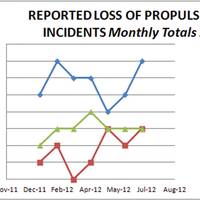
On August 1, 2012, the North American Emissions Control Area (NAECA) took effect, mandating the use of 1.0% sulfur Heavy Fuel Oil (HFO) or residual fuel oil for ships within 200 miles of the continent of North America. California has mandated the use of distillate fuel when ships are within 24 miles of its coastline since July 1, 2009. Lessons learned from California’s experience with distillate fuels may benefit operators as the next phase of NAECA comes into effect (January 1…
Castrol Goes Further on Cylinder Lubricant Choice
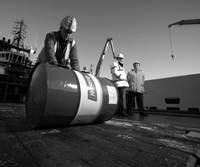
Drawing on OEM reports and its own engine performance tests, Castrol Marine has strengthened its conviction that optimum performance, when slow steaming, can only be achieved by having a range of cylinder oils available for the customer. content and low feed-rates. to those vessels regularly slow steaming, to ensure piston ring packs and liners remain in excellent condition. “The idea of a single, mid range cylinder oil solution for all vessels as sulphur limits are reduced may be seductive…
ExxonMobil Helps Danaos Extends Piston Overhaul
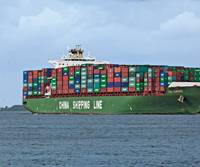
Engineers from Athens-based Danaos Shipping together with ExxonMobil, reportedly extended the overhaul interval required for a piston in a DOOSAN-MAN B&W 12-cylinder K98MC-C engine from 16,000 hours to 42,575 hours. A recent overhaul revealed that cylinder number 11 was in remarkably good condition, with a negligible liner wear rate. The achievement took place aboard the containership MV CSCL Europe, which is chartered to China Shipping Container Lines. Representatives from Danaos Shipping and ExxonMobil systematically monitored the condition of the engine throughout the overhauling process.
ExxonMobil Helps Danaos Shipping Extend Engine Life
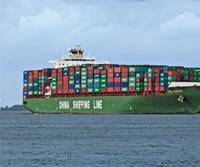
Engineers from Athens-based Danaos Shipping together with ExxonMobil, have reportedly extended the overhaul interval required for a piston in a DOOSAN-MAN B&W 12-cylinder K98MC-C engine from 16,000 hours to 42,575 hours. A recent overhaul revealed that cylinder number 11 was in remarkably good condition, with a negligible liner wear rate. The achievement took place aboard the containership MV CSCL Europe, which is chartered to China Shipping Container Lines. Representatives from…
Alternative Fuel: Defrosting LNG
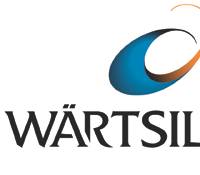
As Cargo, Fuel or both; LNG is emerging as the clear and clean way forward for the maritime industry. The use of LNG as a marine fuel is not new. Vessels trading cryogenic LNG have burned boil-off natural gas in steam boilers for many years as a simple solution to maintaining necessary temperatures and pressures within cargo spaces. The use of the fuel varied according to the size of the ship and a boil off rate ranging between 0.10 to 0.18 percent of the total cargo. As a result of the variable quantities…
LNG Gains Traction as Alternative Fuel

As Cargo, Fuel or both; LNG is emerging as the clear and clean way forward for the maritime industry. The use of LNG as a marine fuel is not new. Vessels trading cryogenic LNG have burned boil-off natural gas in steam boilers for many years as a simple solution to maintaining necessary temperatures and pressures within cargo spaces. The use of the fuel varied according to the size of the ship and a boil off rate ranging between 0.10 to 0.18 percent of the total cargo. As a result of the variable quantities…
Major Overhaul of Norwegian Ferry Engine
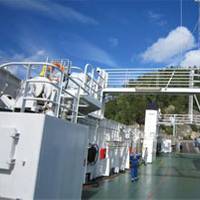
MAN Diesel recently retrofitted the M/F Geisnes pendulum ferry’s engine to Tier II limits. This retrofit solution achieves a 30% NOx reduction. The MAN 6L23/30 main engine originally installed in M/F Geisnes was built in Frederikshavn, Denmark, in 1988 - and after the delivery of the ferry in 1989, it has served the vessel for 96,842 operating hours. In connection with the major overhaul of the main engine, it was decided by the Norwegian owner, Namsos Trafikselskab, to retrofit an upgrade package with Tier II engine components.
Air Emission Regulation Update

In March this year, The U.S. Environmental Protection Agency proposal to designate waters off the North American coasts as an Emission Control Area was adopted by IMO, the International Maritime Organization. The North American ECA is a key part of a comprehensive EPA program to address harmful emissions from large ships. Which are the time schedules of upcoming emission regulations? How are marine engine manufacturers preparing for the tighter air emission limits being adopted? Henrik Segercrantz explores.
MAN Diesel Powers Fall-Pipe, Rock-Dumping Vessel
Construcciones Navales del Norte (La Naval de Sestao) of Spain’s Basque country delivered the Simon Stevin to Jan de Nul in February. Driven by a diesel-electric propulsion system comprising a series of MAN Diesel 32/40 engines, the new addition to the Belgian group’s fleet is claimed to be the world’s largest fall-pipe and rock-dumping vessel with a capacity of 19,500 m3. Construction of the ship lasted 26 months, with keel-laying taking place in April 2008 and launching in March 2009. The Simon Stevin recently departed for Australia for its first commercial projects. The Simon Stevin is powered by five MAN Diesel nine-cylinder 32/40 main engines. Each delivers 4,500 kW at 720 rpm and is manufactured by STX Engine Co., Ltd., MAN Diesel’s Korean licensee.
Wärtsilä Wins Advanced Lube Order
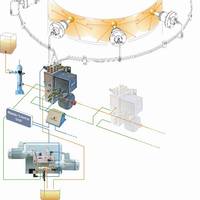
Wärtsilä has been awarded a contract by DSD Shipping AS of Stavanger, Norway to retrofit the main engines on four DSD Shipping vessels with the Wärtsilä Retrofit Pulse Lubricating System. The Retrofit Pulse Lubricating System (RPLS) is designed to lower the oil feed rate to the engine, thus cutting the consumption of lubricating oil. This creates savings in operating costs, and also has a positive effect on exhaust emissions. The DSD Shipping contract is Wärtsilä's first order for the retrofitting of small bore two-stroke engines with this system.
Taking Care of Business
Diamond Services Corp., based in Morgan City, La., knows the importance of staying competitive in the oilfield service industry, which is why the company broke conventional rules of "propping" and built Mr. Mel, the first waterjet-powered crew/supply boat to work in the Gulf of Mexico. The diesel engine/waterjet combination, considered an innovative choice of propulsion system for a crewboat, offers advantages of increased speed, maneuverability and flexibility over propellers. The 145 ft. aluminum monohull, built by Swiftships, Inc., was delivered in February 1995. At the time, Mr. Mel was powered by four 815 bhp diesels driving four Hamilton HM-571 water jets through a Twin Disc MG-5202 gear with a 2:1 reduction ratio. Mr.
Offshore Support Focus
Diamond Services Corp., based in Morgan City, La., knows the importance of staying competitive in the oilfield service industry, which is why the company broke conventional rules of "propping" and built Mr. Mel, the first waterjet-powered crew/supply boat to work in the Gulf of Mexico. The diesel engine/waterjet combination, considered an innovative choice of propulsion system for a crewboat, offers advantages of increased speed, maneuverability and flexibility over propellers. The 145 ft. aluminum monohull, built by Swiftships, Inc., was delivered in February 1995. At the time, Mr. Mel was powered by four 815 bhp diesels driving four Hamilton HM-571 water jets through a Twin Disc MG-5202 gear with a 2:1 reduction ratio. Mr.
Offshore Support Focus
Diamond Services Corp., based in Morgan City, La., knows the importance of staying competitive in the oilfield service industry, which is why the company broke conventional rules of "propping" and built Mr. Mel, the first waterjet-powered crew/supply boat to work in the Gulf of Mexico. The diesel engine/waterjet combination, considered an innovative choice of propulsion system for a crewboat, offers advantages of increased speed, maneuverability and flexibility over propellers. The 145 ft. aluminum monohull, built by Swiftships, Inc., was delivered in February 1995. At the time, Mr. Mel was powered by four 815 bhp diesels driving four Hamilton HM-571 water jets through a Twin Disc MG-5202 gear with a 2:1 reduction ratio. Mr.
Sulzer RTA60C: Big Power For Fast-Type Ships
Wärtsilä NSD used the recent NorShipping exhibition in Oslo as a launching pad for its latest offering to the marine world, the Sulzer RTA60C, an engine designed for faster type ship requiring power outputs up to 18,880 kW (25,680 bhp). The RTA60C furthers the mandate to offer cleaner, more efficient power packages in a smaller space and less weight consuming manner. One indication of its compact dimensions is the fact that the six-cylinder version is just 7,620 mm long. Length has been minimized in similar ways to those that have been proven a success in the RTA48T and RTA58T engines. The fact that the cylinder covers each have just four holding-down studs further accounts for the compact arrangements, while simplifying manufacture.
Propulsion: The New MTU 2000 CR Marine Engines
The continuing advancement of the diesel engine propulsion package for the maritime environment follow a common track, ie. higher power with lower weight; increasingly sophisticated and reliable electronic controls; more efficient handling of emission reductions; and ease of maintenance. While achievement of these objectives vary by manufacturer, as any vessel owner can attest, MTU continues to deliver technological leaps and bounds that are similarly practical. The new MTU 2000 CR (common rail) marine engines are designed to be smaller, lighter, cleaner, more powerful and more economical than their predecessors, the 2000 series. Improvements to the key technologies of turbocharging, injection and electronics have been redeveloped and advanced.


